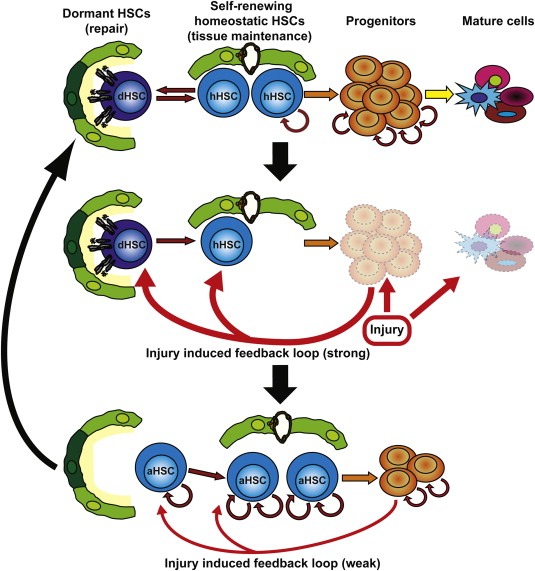Figure 1.

A positive feedback loop leads to the activation of dormant and homeostatic HSCs in response to hematopoietic cell loss. Dormant and homeostatic HSCs reside in distinct bone marrow niches. During homeostasis, dormant HSCs (dHSCs) remain inactive, whereas homeostatic HSCs (hHSCs) divide and self‐renew if the number of progenitors and differentiated cells drop below a homeostatic threshold level. The self‐renewal activity of hHSCs results in the constant generation of rapidly dividing progenitors, which eventually differentiate into mature blood cells. Injury to the hematopoietic system (i.e. irradiation, chemotherapy or bleeding) results in severe loss of hematopoietic cells, inducing strong positive feedback loops (red arrow). As a consequence, dHSCs and hHSCs exit their niches and undergo major self‐renewing divisions, thus replenishing first the progenitor compartment, followed by the recovery of all hematopoietic cell populations and return to homeostasis.
